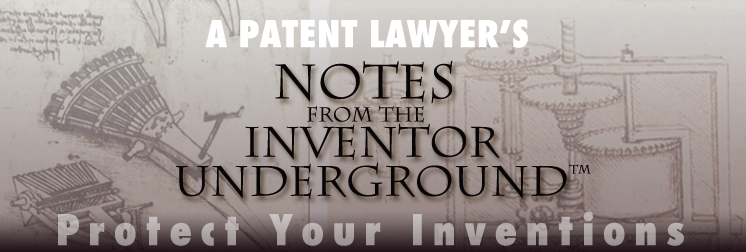
Supreme Court Re-Affirms That Inventors Own Their Inventions
Patent and Technology trial lawyer Stan Gibson discusses last week’s Supreme Court decision, and explains why patent holders should review assignment agreements for language that may prove ineffective in court.
Last week, the United States Supreme Court issued its decision in Leland Stanford Junior University v. Roche Molecular Systems, Inc. concluding that the inventor of a patent owns the patented invention even if federal funding is used to fund the research under the Bayh-Dole Act. The decision affirms that under the Patent Act inventors own their inventions absent an agreement to the contrary. The decision is also yet another reminder to review assignment agreements from inventors to make sure that they assign future inventions with the language "do hereby assign" instead of the language "agree to assign," which the Federal Circuit has held is insufficient to convey title by itself to future inventions.
The case involved a research fellow, Dr. Holodny, who joined Stanford University’s Department of Infectious Diseases in 1988. When Dr. Holodny joined Stanford he signed an agreement in which he "agreed to assign" to Stanford his interest in inventions resulting from his employment at Stanford. The research at Stanford was funded in part by the federal government under the Bayh-Dole Act.
Dr. Holodny’s supervisor arranged for him to conduct research at a predecessor to Roche to further Dr. Holodny’s work. In order to gain access to Roche’s predecessor, Dr. Holodny signed an agreement providing that he "will assign and does hereby assign" to Roche’s predecessor his "right, title and interest in … the ideas, inventions, and improvements" made as a consequence of his access" to Roche’s predecessor facilities and research. During his work at Roche’s predecessor, Dr. Holodny worked on a new test procedure for HIV. When he returned to Stanford, he and other colleagues tested the procedure and Stanford subsequently obtained three patents on Dr. Holodny’s research.
Several years later, Roche put out a test kit that Stanford contended infringed the Holodny patents. Roche responded that it co-owned the patents as a result of the agreement that Dr. Holodny had signed with its predecessor and, therefore, Stanford lacked standing to sue. Stanford contended that because the patents were the result of government funding under Bayh-Dole it had superior rights and owned the inventions. Stanford also contended that it owned the patents by virtue of the assignment in which Dr. Holodny had "agreed to assign" future inventions.
The district court agreed with Stanford and held that Stanford had standing to sue Roche. The Federal Circuit, however, disagreed and found that the Bayh-Dole act did not automatically transfer inventorship rights to Stanford and that Stanford’s "agree to assign" language was not effective to assign future inventions without some further act or agreement, which did not occur. In contrast, the Roche language "do hereby assign" was effective to transfer future inventions without any additional action on the part of the inventor. Therefore, Roche had ownership rights and Stanford lacked standing to sue Roche.
Stanford petitioned for review by the Supreme Court on the ground that under the Bayh-Dole Act it had the ownership rights because it was a government contractor that used government funds for the Holodny research. Notably, it did not appeal the "agree to assign" issue to the Supreme Court.
The Supreme Court reviewed the Bayh-Dole Act language and found it does not automatically transfer title to federally funded inventions to federal contractors or authorize contractors to unilaterally take title to inventions that are created with the use of federal funds. The Supreme Court expressly noted that the Patent Act vests title in the inventor and absent overriding language from Congress, which the Bayh-Dole Act did not contain, the inventor owns the invention. Of course, an inventor can assign his or her patent rights, but absent such a contractual assignment, the inventor owns the invention and only an express grant of those rights will permit an employer, such as Stanford, to receive rights in the invention.
The Supreme Court noted that its construction of the Act also followed common practice by contractors who used contractual assignments to transfer ownership rights from inventors to the employer. The majority opinion also noted that Stanford had not challenged the Federal Circuit’s "agree to assign" construction and, therefore, that issue was not before the Court.
The concurring opinion and the dissenting opinion both questioned the Federal Circuit’s construction of the "agree to assign" language and the minor difference between the "hereby do assign" language that the Federal Circuit found effective to transfer future inventions. The dissent would have reversed and remanded on this ground, noting that the Federal Circuit’s construction went against the plain intent of the contracting parties.
Nonetheless, as a result of this opinion, the Federal Circuit’s decisions holding that the language "agree to assign" is ineffective to assign future inventions without some subsequent act remains the law. Accordingly, the language that the Federal Circuit has found effective to transfer future inventions, "do hereby assign," should be used in assignment agreements to ensure that future rights are assigned. Although the Supreme Court left open the ability to challenge the Federal Circuit’s construction of "agree to assign," it is not likely that this issue will come before the Supreme Court in the near term. As a result, employers would be well advised to revise their assignment agreements as soon as possible to include the "do hereby assign" language. It would also be prudent to review all old assignment agreements and make sure that those agreements containing the "agree to assign" language are modified and that additional assignments are sought for inventions that were created after the date of those agreements. Otherwise, the inventor still owns the inventions and may attempt to assign them to someone else.
 Los Angeles Real Estate Litigation Lawyer Jeffer Mangels Butler & Mitchell LLP Home
Los Angeles Real Estate Litigation Lawyer Jeffer Mangels Butler & Mitchell LLP Home





